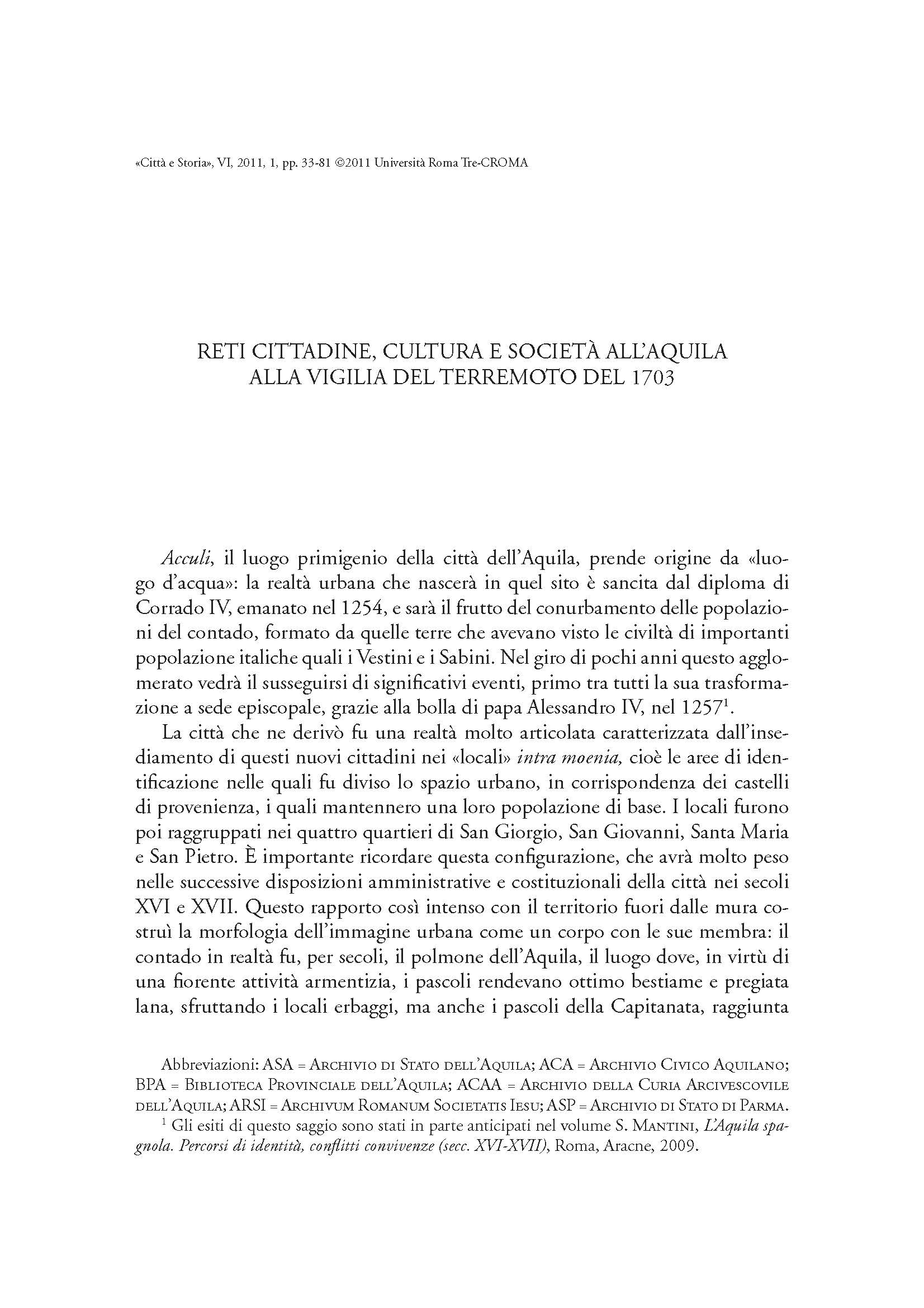Reti cittadine, cultura e società all’Aquila alla vigilia del terremoto del 1703
6,00 €
At the eve of the great earthquake on 2 February 1703 L’Aquila was the capital city of the Abruzzo Ultra, its history having witnessed the alternation of important dynasties such as the Angevin and Aragon, the consolidation Spanish regime, the rise of a patrician class that was enterprising in business and politics, the birth of an aristocratic conscience capable of influencing both arts and letters. Located along the Via degli Abbruzzi, that connected it to the north and south of Italy, the city became an important center for wool and saffron fairs and for the publishing trade connected to its printing works. The Perdonanza jubilee, along with the Franciscan Observance, the Jesuits, the Oratorians and the city’s many brotherhoods and monasteries, wove a tight fabric of spirituality, fervently felt by the community and connected to political institutions. The city’s cultural life was animated by the Academies of the Fortunati and the Velati and by the many families competing on the political scene such as the Colonna, the Branconio, the Bonanni, the Quinzi in an atmosphere of concordia ordinum toward the Monarquia, but also of latent factional conflict. In this setting of Spanish L’Aquila the February 2nd earthquake occurred, destroying an extraordinarily endowed city and shattering the strong network of relationships its community rested upon.
At the eve of the great earthquake on 2 February 1703 L’Aquila was the capital city of the Abruzzo Ultra, its history having witnessed the alternation of important dynasties such as the Angevin and Aragon, the consolidation Spanish regime, the rise of a patrician class that was enterprising in business and politics, the birth of an aristocratic conscience capable of influencing both arts and letters. Located along the Via degli Abbruzzi, that connected it to the north and south of Italy, the city became an important center for wool and saffron fairs and for the publishing trade connected to its printing works. The Perdonanza jubilee, along with the Franciscan Observance, the Jesuits, the Oratorians and the city’s many brotherhoods and monasteries, wove a tight fabric of spirituality, fervently felt by the community and connected to political institutions. The city’s cultural life was animated by the Academies of the Fortunati and the Velati and by the many families competing on the political scene such as the Colonna, the Branconio, the Bonanni, the Quinzi in an atmosphere of concordia ordinum toward the Monarquia, but also of latent factional conflict. In this setting of Spanish L’Aquila the February 2nd earthquake occurred, destroying an extraordinarily endowed city and shattering the strong network of relationships its community rested upon.

